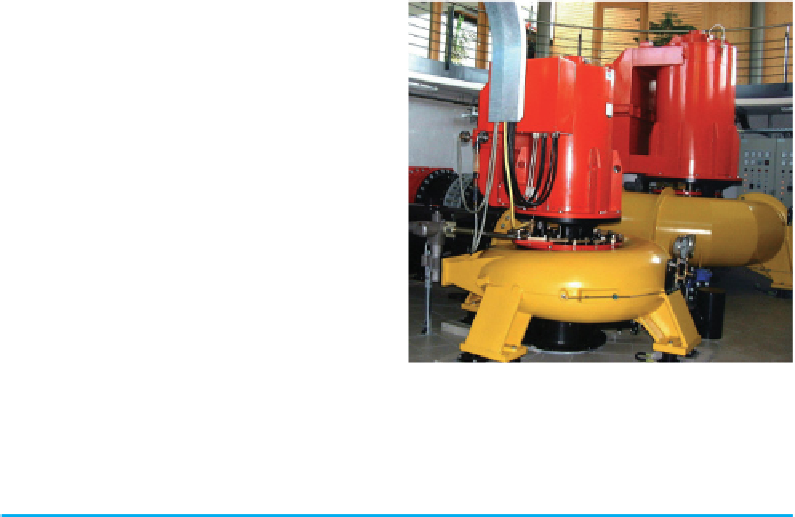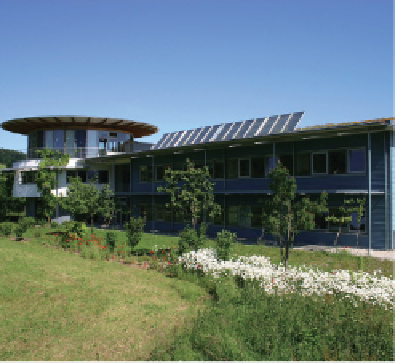Environmental Engineering Reference
In-Depth Information
Figure 14.8
The administration building at the Wasserkraft Volk AG factory of the future in Gutach,
Germany, has its own hydropower plant to generate carbon-free power.
Source: WKV AG, www.wkv-ag.de.
14.3 Climate-Compatible Driving
The colourful, glossy brochures produced by leading car manufacturers are full of
impressive assertions about how much they are doing to protect the environment.
However, with many manufacturers it is diffi cult to discern any real innovation in
creating carbon-free means of transport. Cars that run on natural gas and hybrid cars
make only a marginal difference in reducing carbon dioxide emissions if one looks
at the recommendations for reductions set as a standard for protecting the climate.
The sustainable cultivation potential with biomass fuels is too low to meet total
needs and there is simply not enough carbon-free hydrogen being produced to
advance the innovation of hydrogen automobiles.
Plug-in hybrid vehicles or pure electric cars could offer an alternative in the short
term. Plug-in hybrid vehicles are normally refuelled through a power point and for
emergencies have a combustion engine that can also be run on biofuel. Pure electric
cars only run on electricity. If the electricity is supplied by renewable power plants,
no carbon dioxide is emitted while the vehicle is being driven.
14.3.1 Waste Gas-Free Electropower
Two examples from the USA confi rm that electric cars do not have to be dull and
utilitarian. The companies Tesla Motors and Commuter Cars are currently develop-
ing really innovative vehicles (Figure 14.9).
Tesla Motors offers a 185 kilowatt electric engine for acceleration from 0 to 100 km/h
in less than four seconds. A modern lithium-ion battery enables a range of 390 km
on one battery charge. The battery service life should last up to 160 000 km. It takes
three and a half hours to charge the battery.


